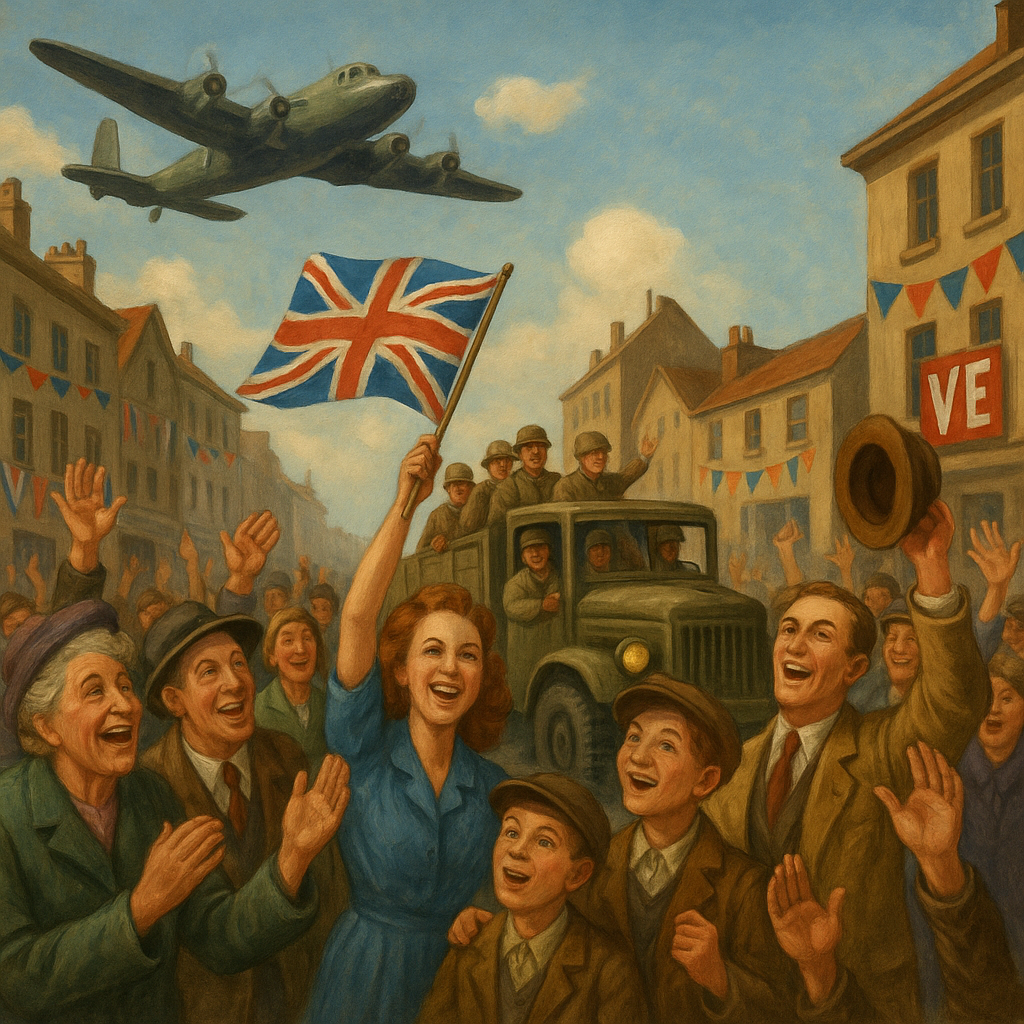Lesson 4: Results of World War II (World War II)
🎉 War Ends
In 1945, the world cheered. The war was over. First, Germany surrendered in May. This day is called Victory in Europe Day (VE Day). Later, in August, Japan surrendered after the U.S. dropped two atomic bombs on the cities of Hiroshima and Nagasaki.
💬 Story: In Times Square, New York, a sailor kissed a nurse in joy when the war ended. The photo became one of the most famous pictures in the world!
But the war left great damage. Over 60 million people had died. Cities were in ruins. Many families had no homes or food. People around the world said, “We must never let this happen again.”
Postwar Japan
After Japan lost the war, U.S. General Douglas MacArthur led the rebuilding of Japan. Japan had to give up its army and build a peaceful government. The U.S. helped write a new Japanese constitution.
Japanese leaders who had started the war or committed crimes were put on trial. These trials were like the ones in Germany. Some leaders were sent to prison, and others were executed.
📚 Story: One brave Japanese woman named Toyoko Takamiya helped teach peace to children after the war. Her school focused on peace and rebuilding. Many students visited Hiroshima to learn from history.
In the years after, Japan worked hard and became one of the world’s strongest economies by the 1960s.
🌍 Postwar Europe
Europe was broken and needed help. In Germany, Nazi leaders were put on trial in the Nuremberg Trials. These trials showed the world that war crimes must be punished. The idea of human rights became stronger.
⚖️ Story: One Nuremberg judge said, “This is not about revenge. It is about justice for the future.”
But Europe was now divided. The Soviet Union controlled the east. The United States and its allies helped the west. A wall of fear and tension grew between the two sides. This was the beginning of the Cold War.
